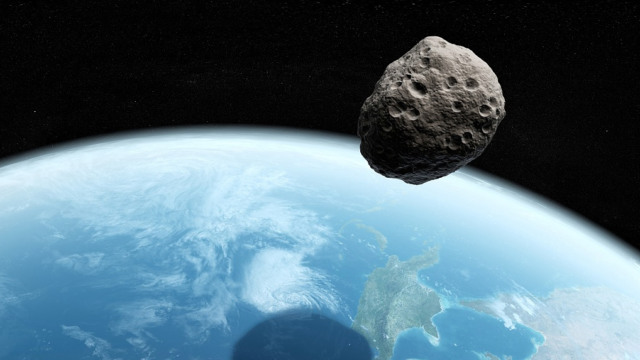NASA will be attempting to knock an asteroid out of orbit in 2022
NASA is going to be making moves in 2022, folks. They’re going to attempt to knock an asteroid out of orbit. While I’m generally convinced we’re going wipe ourselves out, it’s nice to see NASA taking on cosmic threats to our existence just in case we don’t. Or, at least they’re trying.
Business Insider:
If an asteroid were to head toward Earth, we would be quite defenseless, as we have not successfully developed a method that could reduce — or entirely avert — the impact of a devastating collision.
However, that may be about to change. NASA has approved a project called the Double Asteroid Redirection Test (DART), the aim of which is to throw a “small” asteroid off course in October 2022.
The asteroid in question, informally known as Didymoon, is a moon asteroid about 150 meters tall. It’s part of a double asteroid system — named after the Greek word for twins, Didymos — in which it orbits another 800-meter asteroid about a kilometer away.
The European Space Agency is also involved in the missionWhen DART is launched, it will be powered by a solar-electric-propulsion system and will eventually collide with Didymoon.
The spacecraft will also be accompanied by a European Space Agency (ESA) spacecraft called Hera, which will be largely responsible for collating data about the asteroid — however, according to Space, it won’t be on-site during the impact, but it will be present afterward.
According to the ESA, when Hera launches, it will be accompanied by two small CubeSats — nanosatellites no larger than a cereal package — that will record additional data, such as the gravitational field and the internal structure of the asteroid.
The two satellites will be released around the asteroids and will land on the two space rocks.
The asteroid’s orbit will be redirected with the kinetic impactor technique“DART would be NASA’s first mission to demonstrate what’s known as the kinetic impactor technique — striking the asteroid to shift its orbit — to defend against a potential future asteroid impact,” Lindley Johnson, planetary defense officer at NASA Headquarters in Washington, said in a statement.
The idea is that the DART spacecraft, which weighs in at about 500 kilograms, will hit the asteroid at 6 kilometers per second, changing its orbital velocity around Didymos by approximately 0.4 millimeters per second. This may sound like a negligible figure, but the reorientation will be substantial enough to be measured from Earth with telescopes.
Read also: The White House is considering nuking asteroids, according to a NASA report
“DART is a critical step in demonstrating we can protect our planet from a future asteroid impact,” said Andy Cheng, who works at the Johns Hopkins Applied Physics Laboratory and coleads the DART investigation. “Since we don’t know that much about their internal structure or composition, we need to perform this experiment on a real asteroid. With DART, we can show how to protect Earth from an asteroid strike with a kinetic impactor by knocking the hazardous object into a different flight path that would not threaten the planet.”




